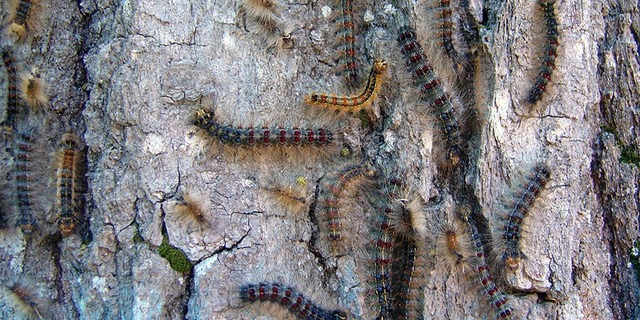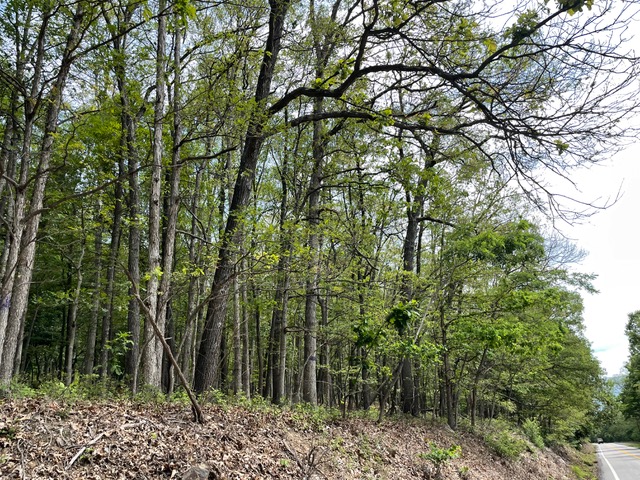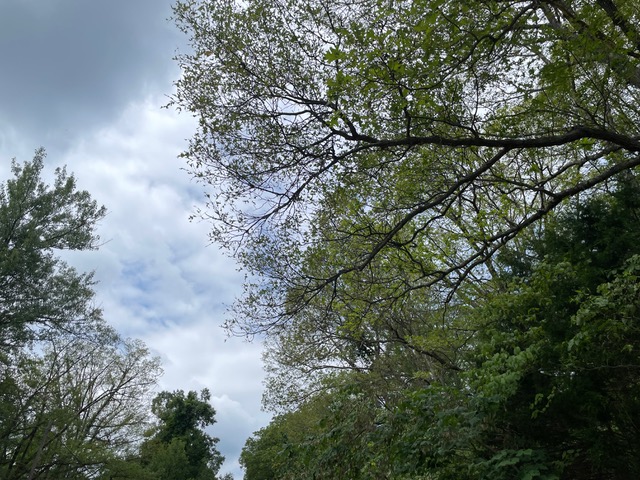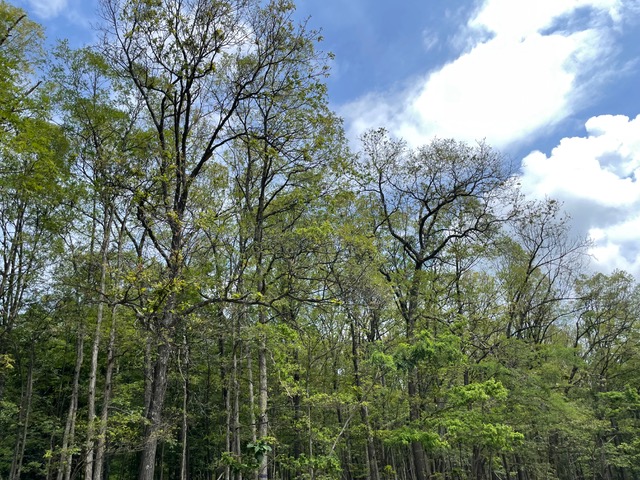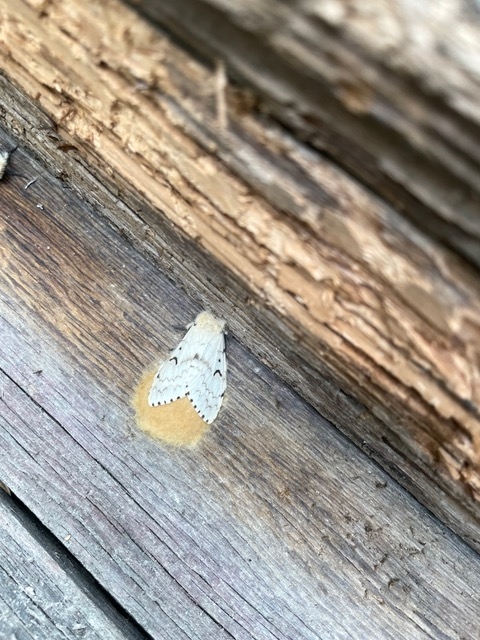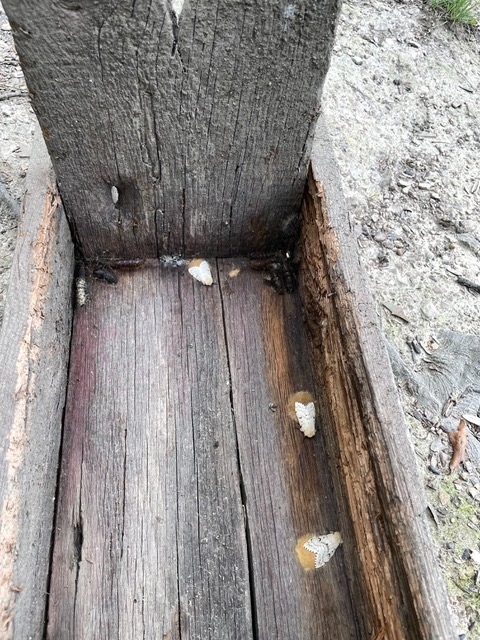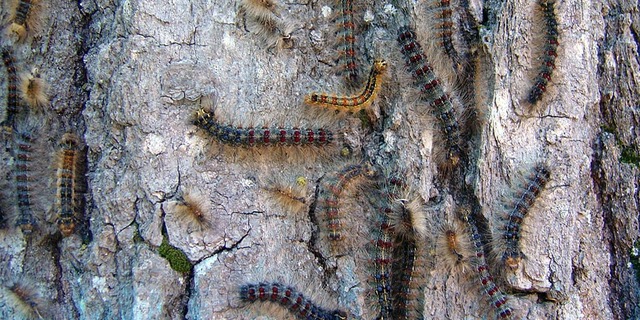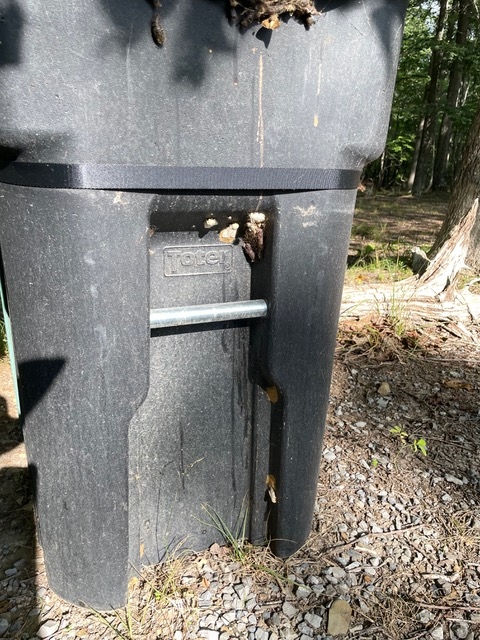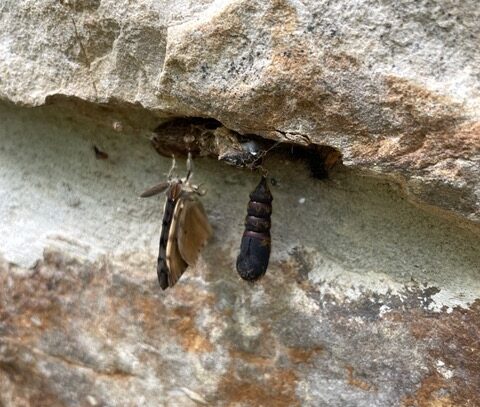The Impact
Spongy moth (formerly known as “gypsy moth”) can be found throughout the Cacapon River watershed and has remained in low numbers in the past several years. However, many property owners in the region saw an increase in spongy moth caterpillars in the spring of 2023.
The potential impact on our forests, streams and rivers is a concern. The spongy moth is the most serious insect pest ever to invade West Virginia’s forests.
Defoliation caused by the spongy moth caterpillars reduces the vigor and general health of forests and shade trees, leads to tree death, alters wildlife habitat, changes the quality and quantity of water, lowers property values and reduces the economic value of timber.
The impact on the forests also relates to our river’s health. Moderate defoliation can cause slight increases in water temperature and water yield, as well as decreases in dissolved oxygen. Sustained moderate spongy moth outbreaks could result in a seasonal increase in water temperature—for a decade or more—in small streams bordered by susceptible vegetation.
Spongy moths have been around for years almost unnoticed, but sudden population increases like what we’re witnessing this year can cause defoliation, stress and even death to our trees. Property owners can play an active part in protecting their forest and river resources.
Controlling the Spread
The primary option for controlling spongy moths is aerial spraying large forested areas in early spring. WV Department of Agriculture (WVDA) offers communities the opportunity to participate in a spray program. WVDA uses treatment materials that are the most effective method in preventing defoliation and the rapid spread of this destructive insect.
On a smaller scale, homeowners can take steps to reduce the spongy moth populations around their homes or on high-valued trees, See below for more details about the life cycle of the spongy moth and homeowner actions.
Homeowners can help reduce the damage by using burlap bands around the trees to collect the caterpillars and kill them in a container of soapy water. (Read more here.)
Spongy Moth Activity
Defoliation due to the spongy moth caterpillars feeding on the tree leaves occurs in spring and early summer, tapering off in July. One 2-inch larva can consume up to 1 square foot of foliage every 24 hours. In heavily infested areas, where there are 250 or more egg masses per acre, the spongy moth can strip the infested trees completely. This defoliation stresses the trees. Repeated heavy defoliation by spongy moths kills trees. The risk of tree death depends on how severely a tree is defoliated (what percentage of leaves are eaten) and the overall tree health.
July – April
Female spongy moths lay fuzzy, felt-like, tan egg masses in July. Each egg mass can have 500 to 1,000 eggs! The masses can be found on tree trunks, underside of branches and on many other outdoor structures – anything close to or leaning against an oak tree may have an egg mass on the underside of that object. The egg masses are dormant until next spring. [Homeowners can help reduce the damage by scraping the egg masses into a container of soapy water and letting them soak for at least 2 days. Read more here.]
April
Caterpillars hatch from early April to late May. These little creatures are mostly a bunch of long hairs. They climb up the tree to feed or dangle on a silk thread to be blown by the wind to neighboring a stand of trees. They can blow in the wind for several miles!
The caterpillars grow larger throughout May and June as they feed on tree leaves. Mature caterpillars are distinctive in appearance, with five pairs of blue spots and six pairs of red spots running down the body.
June-July
The caterpillars pupate in late June or early July (like a butterfly cocoon). Then, they emerge as moths a few weeks later. More detailed life cycle information can be found in this Penn State Extension publication.
The males fly spastically around, looking to mate with the white female moth – which does not fly! Then, the female lays her egg mass in a protected location. [Homeowners can help reduce the damage by scraping the egg masses into a container of soapy water and letting them soak for at least 2 days. Read more here.]
This starts the cycle over again.
More detail on this critter here: https://www.fs.usda.gov/foresthealth/docs/fidls/FIDL-162-SpongyMoth.pdf

